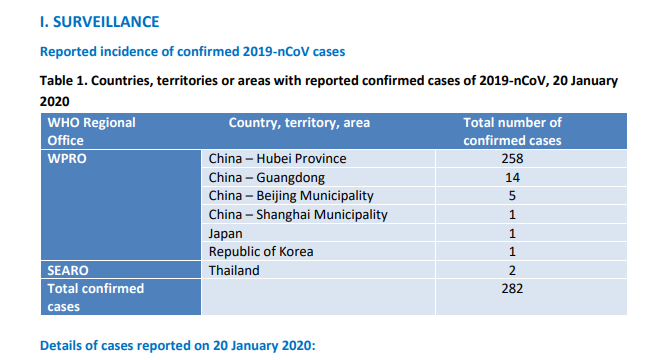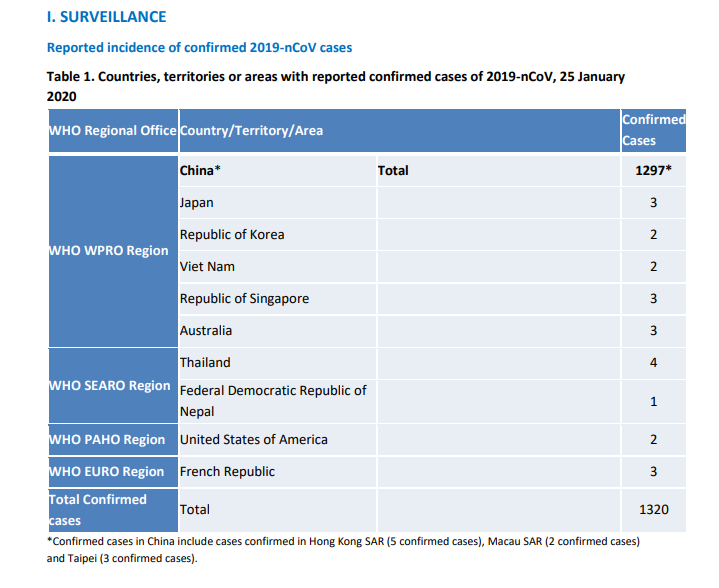Epidemics (Wuhan Outbreak)

The news is currently roaring about this "Wuhan coronavirus", which according to the CDC is known as 2019-nCoV. In my memory this will join the other vast epidemics of swine flu (2009), ebola (2013) and zika (2015).
The history, so far, for this Wuhan outbreak seems to have begun on the last day of 2019 at Huanan Seafood Wholesale Market in Wuhan City, China. Ten days later on January 10, 2020 the entire genomic sequence of the outbreak was submitted to public databases.
Though from December 31, 2019 to January 7, 2020 it was still an unknown etiology. Only after was it correlated that the outbreak was the start of 2019-nCoV. As the severity increased, the involvement with the WHO and CDC hit a global level. Our first situation report showed the numbers already in the hundreds globally.

Five days later that situation report got a bit more serious with confirmed cases increasing to 1,320.

However, lets talk about the virus itself. What are the symptoms and how does it evolve to the point of death?
The CDC once again gives us the symptoms, which are scarily just the same as a common cold:
- runny nose
- headache
- cough
- sore throat
- fever
- general unwell
It also spreads just like the cold via person to person from sneezes and coughs. The good news though is it isn't as deadly as the other corona-viruses like SARS and MERS.
What does make this deadly is there is no vaccine as of January 26, 2020. So if you contract this virus and already a bit ill, it may evolve to kidney failure, difficult breathing to pneumonia to death.
Where this iteration makes it difference from MERS and SARS is the incubation period, as it ranges from 10-14 days. All of which you are contagious during that time.
The WHO met on January 22, 2020 in an emergency meeting to discuss if this event should be classified as a PHEIC (Public Health Emergency of International Concern).
On 22 January, the members of the Emergency Committee expressed divergent views on whether this event constitutes a PHEIC or not. At that time, the advice was that the event did not constitute a PHEIC, but the Committee members agreed on the urgency of the situation and suggested that the Committee should be reconvened in a matter of days to examine the situation further.
source - who.init
At this time affected regions in China have been quarantined like you would see in a movie.

Which is just crazy to think about, as the logistics for day to day life when cut off from civilization must be dire. In addition to a quarantine a nationwide temporary ban of wildlife sale has been put into affect for markets, restaurants and websites.
The next few days will be interesting to follow as flights within the incubation period from Wuhan, China landed in Atlanta, Chicago, Los Angeles, New York and finally San Francisco. There is even rumor as of writing this post that the 3rd confirmed case in USA has been identified.
Stay healthy.
